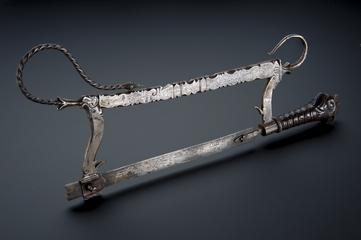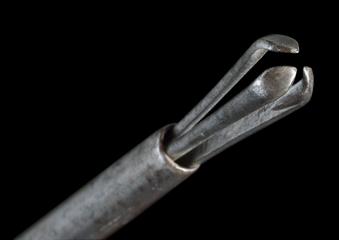




Bistoury cache, double bladed, early 16th century, steel and wrought iron, Drs. Hamonic collection
Bistoury caché literally translates from the French as “hidden knife”. The device was used to cut internal organs or to open cavities, particularly during the surgical removal of a bladder or kidney stone – a practice known as lithotomy. This object was collected by Henry Wellcome from the private collection of Noel Hamonic (active 1850-1928). Two collections were purchased; one of surgical instruments in June 1928 for £4,400 and one of pharmacy items in July 1928 for £803.
Details
- Category:
- Surgery
- Collection:
- Sir Henry Wellcome's Museum Collection
- Object Number:
- A121505
- Materials:
- steel and iron, wrought
- Measurements:
-
overall: 4 mm x 254 mm x 95 mm, .1kg
- type:
- bistoury caché
- credit:
- Hamonic Collection




